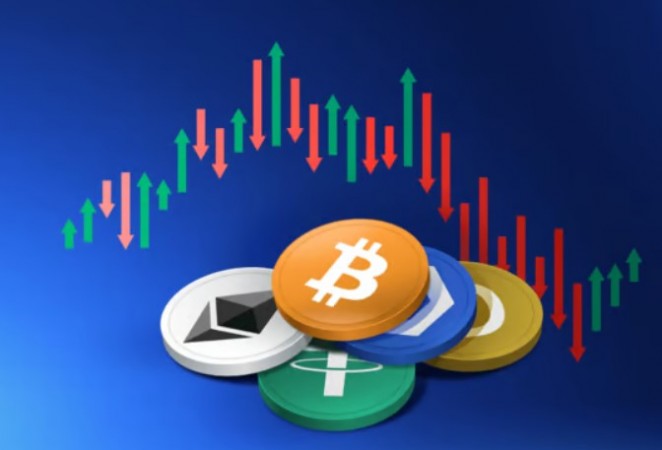
In this era of rapidly evolving digital investments, Bitcoin and IOTA have emerged as transformative forces, challenged conventional financial systems and redefined the investment landscape. Bitcoin, often hailed as "digital gold," has become a store of value with its decentralized blockchain technology, while IOTA harnesses the power of the Internet of Things (IoT) through its innovative Tangle technology. In this article, we delve deep into these two digital assets, exploring their technologies, use cases, investment strategies, and the profound impact they are having on the ever-changing world of Investing 2.0. For a deeper understanding of investment opportunities in this region, explore Visit profit-method.org, a specialized firm offering clear and direct information on investment education.
Bitcoin, created by an anonymous entity known as Satoshi Nakamoto in 2008, is a decentralized digital currency. It operates on a peer-to-peer network, enabling users to send and receive value directly without the need for intermediaries like banks.
At the heart of Bitcoin lies blockchain technology, a decentralized and immutable ledger that records all transactions. This technology ensures transparency, security, and trust in the Bitcoin network.
Bitcoin's scarcity and its deflationary nature have led to its characterization as "digital gold." Investors see it as a hedge against inflation and economic uncertainties, akin to precious metals like gold.
Investors can approach Bitcoin in various ways, from long-term "HODLing" to short-term trading. Risk tolerance, investment horizon, and market analysis play crucial roles in formulating a suitable investment strategy.
IOTA is not just a cryptocurrency but a revolutionary technology designed for the Internet of Things (IoT). It does away with traditional blockchains and instead utilizes a directed acyclic graph (DAG) called the Tangle to enable feeless microtransactions and data transfer.
The Tangle's unique structure ensures scalability and decentralization, making it an ideal solution for IoT applications. Unlike blockchain, the more transactions in the Tangle, the faster and more secure it becomes.
IOTA's versatility extends beyond cryptocurrencies. It finds applications in supply chain management, smart cities, energy grid optimization, and more. Its feeless nature makes it an attractive choice for micropayments and machine-to-machine transactions.
IOTA's potential for disruptive innovation is undeniable, but it also comes with risks, such as unproven scalability and network security challenges. Investors should carefully assess these factors before committing capital.
Bitcoin's block size and block time limitations result in slower transaction speeds and higher fees during peak demand. In contrast, IOTA's Tangle allows for faster and feeless transactions, making it more suitable for microtransactions and IoT use cases.
Bitcoin's proof-of-work (PoW) consensus mechanism is renowned for its security but consumes significant energy. IOTA employs a unique consensus mechanism called Coordicide, designed to ensure security while remaining energy-efficient.
Bitcoin primarily serves as digital gold and a store of value. IOTA's applications extend into various industries, offering solutions for IoT, data integrity, and automation. Its adoption and partnerships in the IoT space indicate promising growth potential.
Bitcoin's history is marked by significant price fluctuations, attracting both speculators and long-term investors. IOTA, being a newer entrant, exhibits higher volatility but may also offer substantial returns for those willing to take calculated risks.
Institutional investors, such as hedge funds and corporations, are increasingly entering the Bitcoin market, adding credibility and stability to the asset class. This trend may continue as regulatory clarity improves.
The IoT market is poised for exponential growth, and IOTA's feeless and scalable technology positions it as a frontrunner in this space. As IoT adoption expands, so too may the demand for IOTA.
The regulatory landscape for cryptocurrencies is evolving, impacting market dynamics. Investors should monitor regulatory developments and adapt their strategies accordingly.
While Bitcoin and IOTA offer promising investment opportunities, diversifying a digital asset portfolio is essential to manage risk effectively. Explore other cryptocurrencies and assets to balance your investment strategy.
Diversify your investments to mitigate risk. Consider allocating a portion of your portfolio to both Bitcoin and IOTA while maintaining a diversified mix of assets.
Protect your investments with secure wallets and backup solutions. Understand the risks of exchanges and consider offline storage options like hardware wallets.
Cryptocurrency markets are highly dynamic. Stay updated on news, developments, and market sentiment to make informed decisions.
Assess your investment goals and risk tolerance when choosing between long-term holding (HODLing) and short-term trading. Both strategies have their merits, but they cater to different objectives.
In conclusion, the world of digital asset investments is undergoing a remarkable transformation with the emergence of Bitcoin and IOTA. These two cryptocurrencies, with their distinct attributes and potential, offer investors exciting opportunities. As the landscape continues to evolve, understanding the nuances of these assets, adopting sound investment strategies, and staying informed about market developments will be key to navigating the dynamic world of Investing 2.0 successfully. Whether it's Bitcoin's role as a store of value or IOTA's potential in the IoT space, these digital assets are changing the game and opening up new possibilities for investors in the ever-shifting financial landscape.